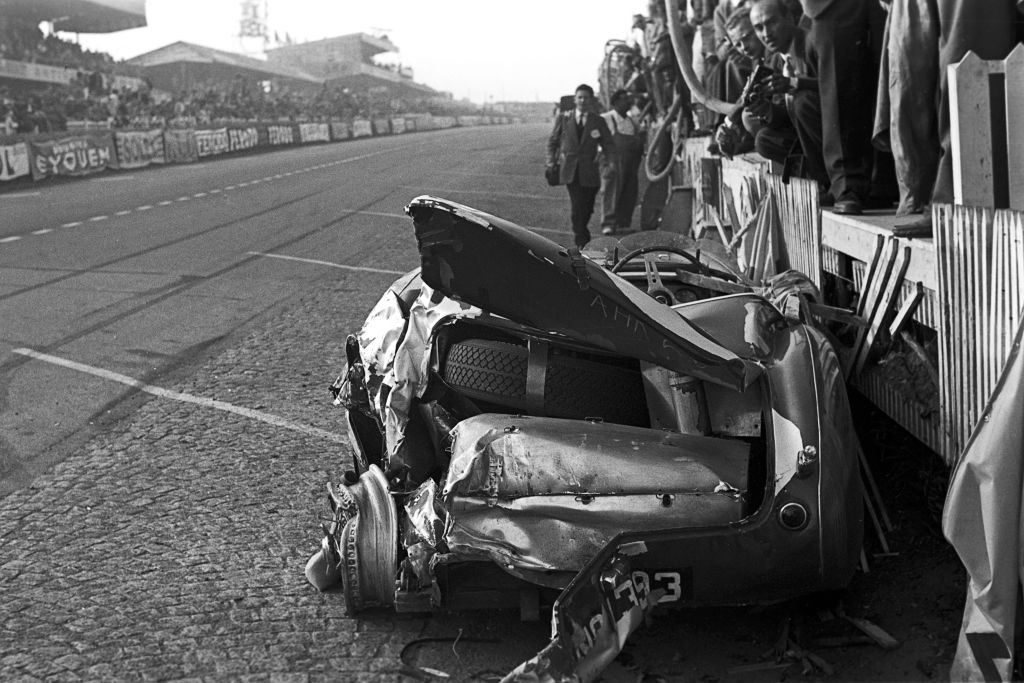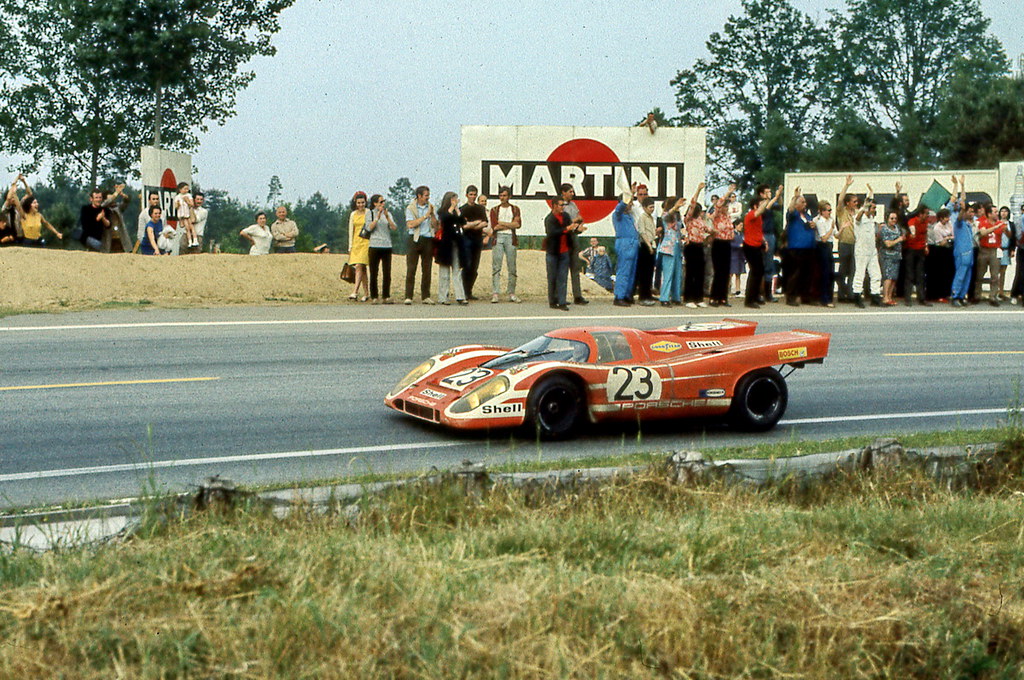A Century Of Racing
For over 100 years, the 24 Hours of Le Mans has been one of the most iconic events in motorsport. For 24 grueling hours, drivers round the legendary combination of permanent track and public roads for their chance at glory.
A test of engineering, skill, and endurance unlike any other, let's look back at the most memorable moments from a century at Le Mans.

The Original
The first 24 Hours of Le Mans began on May 26, 1923, and ended the following day. Race day was a complete mess, with intermittent rain lasting for the entire event.
 D.A.S. (Germany), Wikimedia Commons
D.A.S. (Germany), Wikimedia Commons
It Was Impossible To See
In 1923, the drivers didn't even have goggles or windshields, and the other cars would kick mud up into their faces throughout the entire race.
Sounds pretty miserable if you ask me.
 Nicolas Bachmann, CC BY-SA 4.0, Wikimedia Commons
Nicolas Bachmann, CC BY-SA 4.0, Wikimedia Commons
A French Affair
Naturellement, the first Le Mans featured mostly French automakers. Of the 37 cars entered by 20 automakers, all but three were French. The English entered a Bentley and Belgium fielded two beastly 5.3-liter Excelsiors.
There Was No Winner The First Time Out
French automaker Chenard-Walcker built both the first- and second place-winning cars, but they weren't declared the winner. Why? Well, back then, 24 Hours at Le Mans wasn't enough. They had to do it two more times.
 The Mirror of Sports, Wikimedia Commons
The Mirror of Sports, Wikimedia Commons
It Took Three Races To Win
The first 24 Hours of Le Mans was just the first leg of the Rudge-Whitworth Triennial Cup, which was more of an engineering contest than anything else. After three 24-hour races, the winner would be the manufacturer whose car beat its target distance by the biggest margin.
It was about whose car performed the best more than it was about motorsport glory. That came later.
 Nicolas Bachmann, CC BY-SA 4.0, Wikimedia Commons
Nicolas Bachmann, CC BY-SA 4.0, Wikimedia Commons
The French Took The Crown
In the end, a 1.1-liter Salmson driven by Lucien Desvaux and Georges Casse was declared the winner, as it exceeded its target laps by 46. Surprisingly, 30 of the 37 cars managed to finish the race. There wouldn't be a completion rate that high again until 1993.
 Klemantaski Collection, Getty Images
Klemantaski Collection, Getty Images
They Had One Heck Of A Feast
During the race, drivers and crews consumed 150 gallons of onion soup, 50 chickens, 450 bottles of Champagne, and "an unrecorded amount of red and white wine".
 Le Génie Civil, Wikimedia Commons
Le Génie Civil, Wikimedia Commons
Cancellations
Since its inception, the 24 Hours of Le Mans has been canceled 10 times. Once was during the Great Depression, then WWII stopped Le Mans from happening between 1940 and 1948.
But one man made sure the race came back with a bang.
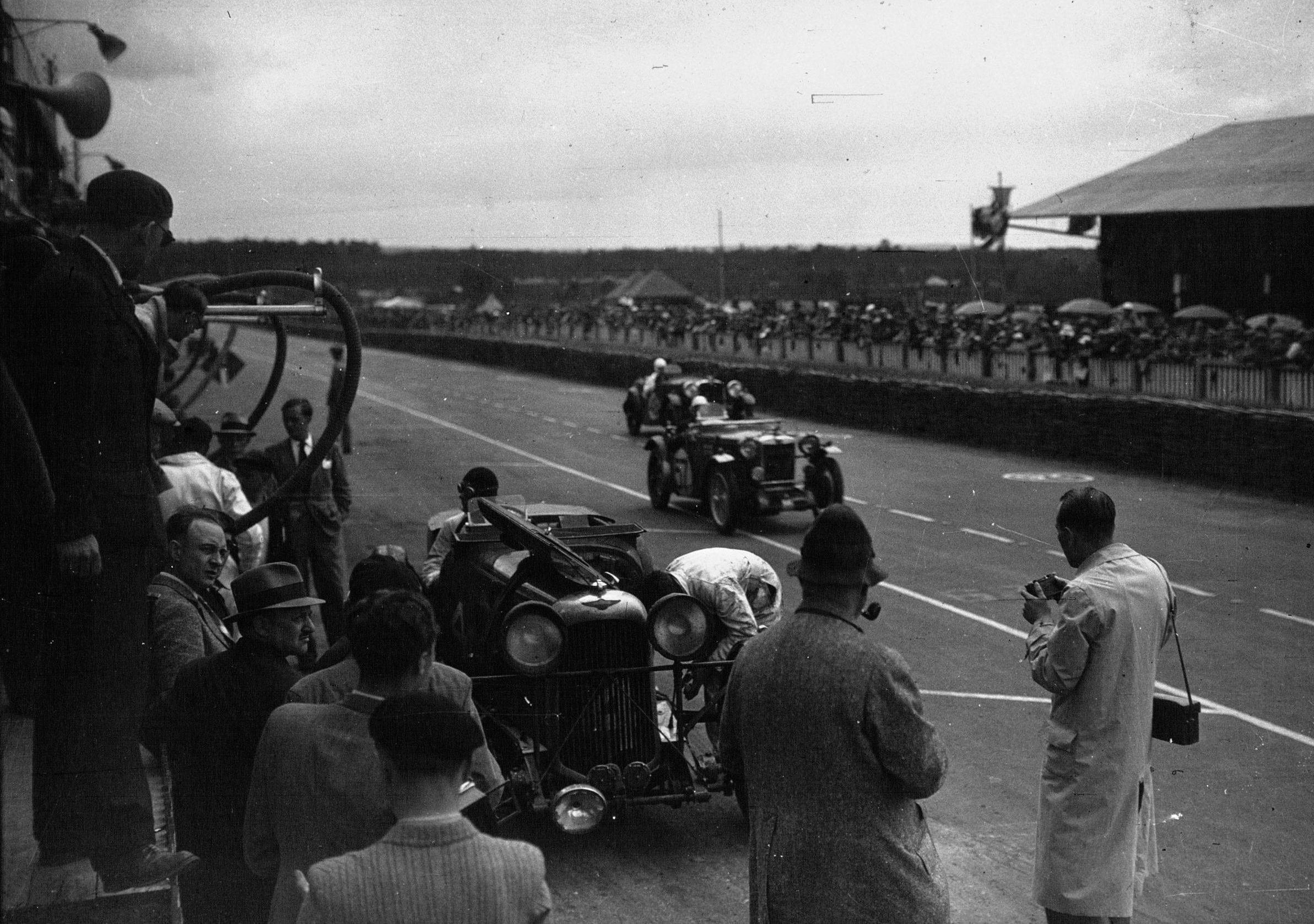 Agence de presse Meurisse, Wikimedia Commons
Agence de presse Meurisse, Wikimedia Commons
Ferrari Enters The Fray
When Le Mans returned in 1949, Enzo Ferrari entered the race for the first time ever. I think it's safe to say, it wouldn't be the last.
 Unknown Author, Wikimedia Commons
Unknown Author, Wikimedia Commons
He Entered Two 166 MM Barchettas
Ferrari's two 166 MM Barchettas each had a 2.0-liter V-12 that pushed out 140 horsepower and could reach a top speed of 130 mph.
Le Mans had never seen anything like it—but that didn't mean Ferrari was confident.
 Unknown photographer, Wikimedia Commons
Unknown photographer, Wikimedia Commons
He Didn't Think They'd Make It
Le Mans isn't just about having a fast car. It's about having a fast car that can drive around the track for 24 hours. Ferrari wasn't sure his cars would be able to make it over the finish line—so he planned to save face.
 Unknown Author, Wikimedia Commons
Unknown Author, Wikimedia Commons
He Didn't Put His Name On It
Doubting his cars' ability to last the full 24 hours, Ferrari decided not to enter them as factory cars, and instead arranged to have both entered privately.
He shouldn't have been so worried.
 Unknown Author, Wikimedia Commons
Unknown Author, Wikimedia Commons
He Won His First Time Out
Ferrari was half right. One of his cars had to drop out of the race after just the sixth hour. The other car? It won the whole dang thing.
 Klemantaski Collection, Getty Images
Klemantaski Collection, Getty Images
One Man Drove Most Of The Race
Ferrari's winning Barchetta was piloted by Luigi Chinetti and Peter Mitchell-Thomson, but it was Chinetti who drove for a mind-boggling 22.5 hours to win the race.
 Unknown photographer, Wikimedia Commons
Unknown photographer, Wikimedia Commons
The Crazy American
There's no one in the long and illustrious history of Le Mans who's quite like Briggs Swift Cunningham. In 1950, the American sportsman tried to enter his own Frankenstein car: A Fordillac.
The French organizers turned up their nose at the bizarre auto—but Cunningham wasn't going to give up.
He Entered Two Cadillacs
The organizers at Le Mans had rejected his Fordillac, so Cunningham entered two Cadillacs instead. This time, they let him in—but maybe they didn't realize that Cunningham's Cadillacs weren't exactly...usual.
 JOHN LLOYD, CC BY 2.0, Wikimedia Commons
JOHN LLOYD, CC BY 2.0, Wikimedia Commons
Le Puppy
The French called Briggs Cunningham's Cadillac Series 61 "Petit Pataud," or "clumsy puppy". The stock-looking Caddy certainly didn't look like any other car in the field—but it was a piece of art compared to Cunningham's other vehicle.
He Made A Custom
Cunningham had removed the body of his second Cadillac entirely and replaced it with a lower, narrower aluminum body. I suppose he thought the unique design might give him the edge he needed to give the USA its first-ever Le Mans win.
 Klemantaski Collection, Getty Images
Klemantaski Collection, Getty Images
Le Monstre
The French nickname for Cunningham's custom Cadillac was "Le Monstre," which he personally drove during the event. Cunningham didn't win anything, but both cars finished, with Petit Pataud and Le Monstre finishing 10 and 11th, respectively.
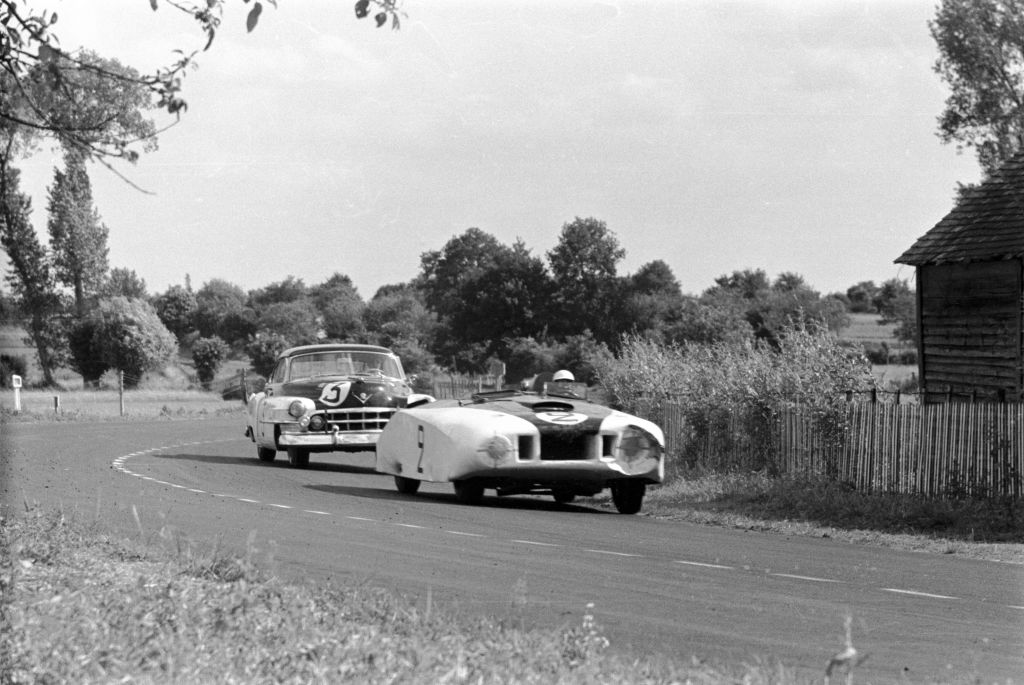 Klemantaski Collection, Getty Images
Klemantaski Collection, Getty Images
Jaguar Dominated The 50s
Great Britain's Jaguar C-Type ushered in a new era for racing in 1953. After winning the event in 1951 then losing in 1952, Jaguar entered the race in 1953 with something new that would change everything.
 Jaguar MENA, CC BY 2.0, Wikimedia Commons
Jaguar MENA, CC BY 2.0, Wikimedia Commons
Disc Brakes Hit The Scene
When Jaguar's C-Type won the 1953 Le Mans, it wasn't just the first car with disc brakes to win Le Mans—it was the first car with disc brakes to win any professional race anywhere.
Essential Technology
Jaguar's disc brakes dissipated heat far better than the drum brakes of the era. After Jaguar cruised to an easy victory in 1953, disc brakes became the standard, which they remain today.
The Darkest Day In Racing History
When the 23rd edition of the 24 Hours of Le Mans began on June 11, 1955, no one realized they were about to witness the darkest day in the history of motorsports.
It Only Took An Instant
Just 2.5 hours into the race, Jaguar driver Mike Hawthorn cut in front of Austin-Healey's Lance Macklin, and braked to enter a pit stop.
Macklin had to swerve to the left to avoid hitting Hawthorne—and he didn't see Mercedes Benz's Pierre Levegh coming behind him at full speed.
Worst-Case Scenario
Levegh's Mercedes-Benz 300 SLR slammed into Macklin's car and launched into the air as if it had hit a ramp. Traveling at over 125 mph, Levegh's car skipped right over a large protective dirt berm—and straight into the spectator area beyond.
Tragic Carnage
Before anyone could react, the Mercedes scythed through the unprepared spectators. After two bounces, it finally disintegrated, sending the engine, suspension, and hood into the remaining crowd.
The Worst Day In Motorsports
In the end, 83 spectators lost their lives, and another 180 were injured. Levegh himself perished when he was thrown from the tumbling vehicle onto the track.
He Saved His Teammate
Levegh didn't have time to avoid Hawthorne's car, but in the final moments before impact he managed to raise his had to warn his teammate, Juan Manuel Fangio, of the danger ahead, likely saving Fangio's life.
It Became An Inferno
While the front end of the car flew into the onlookers, the rear end of its highly-flammable magnesium body landed on the berm and burst into a raging inferno. It must have looked like Hell on Earth.
Caroll Shelby
American racing legend Caroll Shelby won Le Mans from behind the wheel in 1959. But he was driving for Aston Martin, a British automaker. When he returned in 1964, he brought his own wheels.
He Drove A Legendary Car
Shelby brought his legendary Daytona Cobra coupe to the 1964 Le Mans, his own engineering up against the likes of Ferrari. His cars were a work of art, but despite their best efforts, they couldn't overtake the Italians.
The Daytona Cobra had to settle for a class win and 4th place overall. But Shelby wasn't done yet.
 Jaydec, CC BY-SA 3.0, Wikimedia Commons
Jaydec, CC BY-SA 3.0, Wikimedia Commons
The GT40 Program
Caroll Shelby wanted to win the 24 Hours of Le Mans himself, but after 1964, he got an opportunity he couldn't pass up. He joined Ford's GT40 program—and made history.
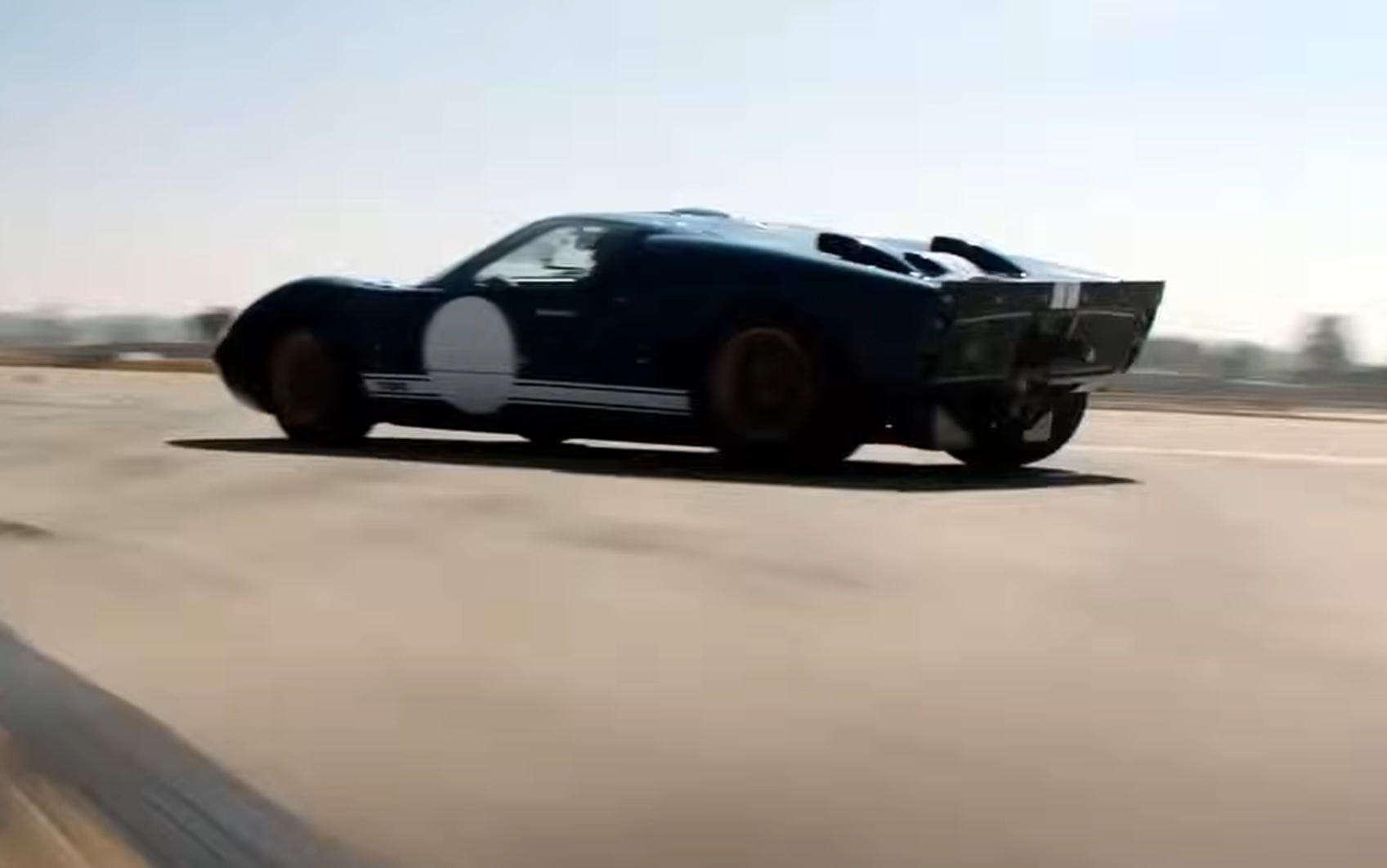 Chernin Entertainment, Ford V Ferrari (2019)
Chernin Entertainment, Ford V Ferrari (2019)
Ford Wanted A Win
Henry Ford II had tried to earn a title at Le Mans by buying Ferrari, but at the very last minute, Enzo Ferrari himself pulled the rug out from under him.
When Ford went looking for revenge, he brought in Caroll Shelby. But it didn't go smoothly.
 Hugo van Gelderen, Wikimedia Commons
Hugo van Gelderen, Wikimedia Commons
The GT40s Lost
The Ford GT40 Mark I entered Le Mans in both 1964 and 1965, but failed to finish either year. Then Henry Ford brought in Caroll Shelby and gave him a blank check to build something that could beat Ferrari.
It was money well spent.
 ZANTAFIO56, CC BY-SA 2.0, Wikimedia Commons
ZANTAFIO56, CC BY-SA 2.0, Wikimedia Commons
The Clean Sweep
Shelby's GT40s completed the 1-2-3 overall victory at the 1966 Le Mans, the first overall win for an American constructor at the race ever. They repeated the win the following day, this time with the first all-American team ever—car, team, and drivers.
GT40s won again in 1968 and 1969.
 ZANTAFIO56, CC BY-SA 2.0, Wikimedia Commons
ZANTAFIO56, CC BY-SA 2.0, Wikimedia Commons
A New Generation
50 years after the GT40's first victory at Le Man, Ford entered the race again, this time with its all-new Ford GT. The new car finished first and third in its class, but couldn't quite match its legendary pedigree.
 Chernin Entertainment, Ford v Ferrari (2019)
Chernin Entertainment, Ford v Ferrari (2019)
The King Of Cool And Le Mans
Steve McQueen was the King of Cool, and he was absolutely obsessed with motorsports. It's only natural, then, that he should star in 1971's Le Mans.
 Cinema Center Films, Le Mans (1971)
Cinema Center Films, Le Mans (1971)
McQueen Wanted To Race
Production took place during the actual race—but despite wanting to, organizers wouldn't actually let McQueen take part. It was really Jo Siffert and Brian Redman driving McQueen's Gulf-Porsche 917K in the footage.
 Cinema Center Films, Le Mans (1971)
Cinema Center Films, Le Mans (1971)
He Could Have Done It
McQueen drove a Porsche 908/2 to second place at the 12 Hours of Sebring in preparation for Le Mans. It must have been heartbreaking when they told him he couldn't race.
Chevy Takes A Crack At It
Though Corvettes entered privately had raced, Chevrolet entered the factory competition for the first time in 2000 with the Corvette C5-R. After placing fourth in class that year, Chevy returned to get first and second in class in 2001, 2002, and 2004—but still to this day, no Corvette has ever gotten an overall win.
 Martin Lee, CC BY-SA 2.0, Wikimedia Commons
Martin Lee, CC BY-SA 2.0, Wikimedia Commons
The Sun Rises On Le Mans
Nissan and Toyota were the first Japanese automakers to enter Le Mans, but Mazda was the first company to win the thing, doing so with their 787B—and this car was unlike anything that's won Le Mans before or since.
 Surreal Name Given, CC BY-SA 2.0, Wikimedia Commons
Surreal Name Given, CC BY-SA 2.0, Wikimedia Commons
It Used A Rotary Engine
The Mazda 787B wasn't just the first Japanese car to win Le Mans. It was also the first—and only—car to ever win the race without a piston engine. The vehicle used a revolutionary rotary engine that pushed over 700 horsepower.
Toyota Was Cursed
Toyota started their journey to Le Mans glory all the way back in the 1980s, but for decades, the closest they got was a second-place finish in 1991.
In 2016, it looked like they would finally break the curse, but after leading the race for 23 hours and 55 minutes, disaster struck.
 Kevin Decherf, CC BY-SA 2.0, Wikimedia Commons
Kevin Decherf, CC BY-SA 2.0, Wikimedia Commons
Last-Minute Failure
With just six minutes remaining, Kazuki Nakajima's Toyota suffered a mechanical failure. The car just barely managed to limp over the finish line—but by then, the second-place Porsche easily made up the difference and took the checkered flag.
 United Autosports, CC BY-SA 2.0, Wikimedia Commons
United Autosports, CC BY-SA 2.0, Wikimedia Commons
Redemption
It was Kazuki Nakajima behind the wheel again in 2018, and this time he not only gave Toyota the pole position, but he brought the Japanese automaker its first-ever victory. They would go on to win five consecutive years in a row.
 Moto Club4AG Miwa, CC BY 2.0, Wikimedia Commons
Moto Club4AG Miwa, CC BY 2.0, Wikimedia Commons
Flying Cars
1985 was the first year that Mercedes had entered Le Mans since the 1955 disaster—and things didn't get off to a great start. During practice, John Nielsen's Mercedes caught air as it was cresting a hump at 220 mph, soaring into the air, flipping, and landing on its roof.
 mark rider, CC BY 2.0, Wikimedia Commons
mark rider, CC BY 2.0, Wikimedia Commons
The Silver Arrow
Nielsen's Mercedes was called the Silver Arrow for the way it soared through the air, but miraculously, the driver walked away uninjured.
But it wouldn't be the last time Le Mans would see a Silver Arrow.
 Martin Lee, CC BY-SA 2.0, Wikimedia Commons
Martin Lee, CC BY-SA 2.0, Wikimedia Commons
The Worst Le Mans Car Ever
I guess they didn't learn their lesson. During practice at the 1999 Le Mans, Mark Webber's Mercedes-Benz CLR soared into the air at high speeds, much like Nielsen's had.
Mercedes looked into it, said they fixed the problem—then it happened again during warmups on race day. But would it happen during the actual race? Yes. It would.
 Ben, CC BY-SA 2.0, Wikimedia Commons
Ben, CC BY-SA 2.0, Wikimedia Commons
He Flew Over The Fence
During the 1999 24 Hours of Le Mans, Peter Dumbreck's CLR took to the air and actually managed to fly straight over the safety fence, eventually touching down again in the woods.
 Martin Lee, CC BY-SA 2.0, Wikimedia Commons
Martin Lee, CC BY-SA 2.0, Wikimedia Commons
Enough Is Enough
Dumbreck was again miraculously unharmed, but enough was enough. Mercedes withdrew their other CLR from the race and ended their entire racing program.
 Martin Lee, CC BY-SA 2.0, Wikimedia Commons
Martin Lee, CC BY-SA 2.0, Wikimedia Commons
Porsche Is King
No automaker has won the 24 Hours of Le Mans as many times as Germany's Porsche. They entered for the first time in 1951 with their 356 SL. But their first win would take almost 20 years of hard work.
They Were So Close
Porsche tried year in and year out but just couldn't take home an overall victory at Le Mans. The most painful loss came in 1969, when they missed the checkered flag by just 120 yards, the closest Le Mans finish in history.
 ZANTAFIO56, CC BY-SA 2.0, Wikimedia Commons
ZANTAFIO56, CC BY-SA 2.0, Wikimedia Commons
They Crested The Mountain
Porsche finally got that win in 1970, and since then, they've amassed 19 overall victories and 108 class wins, making them the most successful manufacturer in the history of Le Mans.
A June Classic
The 24 Hours of Le Mans has only been held outside of June four times in its history. The first race was in May. In 1956, it was held in July. In 1968, unrest in France meant the race was postponed until September.
And in 2020, Covid meant the race was delayed until September for the second time ever.
 Alain Janssoone, CC BY-SA 2.5, Wikimedia Commons
Alain Janssoone, CC BY-SA 2.5, Wikimedia Commons








